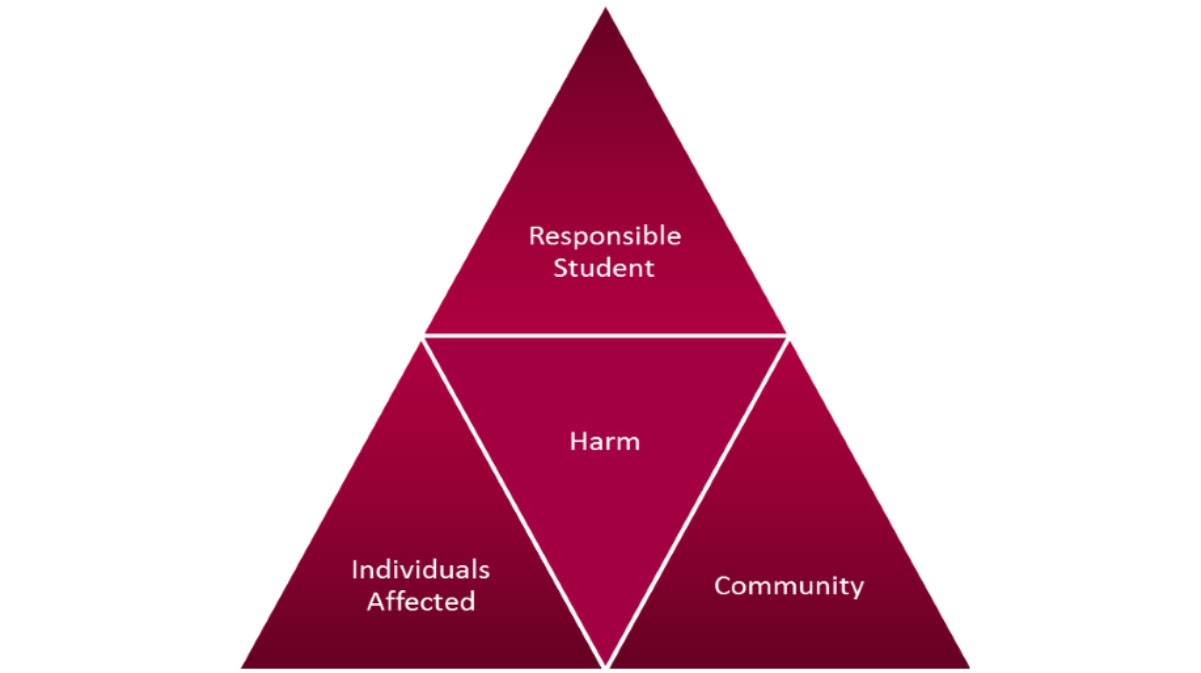Restorative Justice Conference
Restoration Justice Conference

A Restorative Justice Conference is a process of dialogue with the intent of restoring relationships and repairing harm that is facilitated by a staff member on the SRCR Team after an incident has occurred that has negatively impacted a community and the responsible person has accepted responsibility for their actions and expressed interest in speaking with those who were affected. Both the responsible person and the community members affected by the incident come together to identify the impact of the incident and collaboratively determine how to rebuild trust and repair any harm that has been caused.
The RJ Process in 6 Steps
STEP 1: Preconference with those who caused harm
STEP 2: Preconference with those harmed
STEP 3: Conference
STEP 4: Agreement reached/signed by all
STEP 5: Participants may have follow-up meeting with facilitator to check in on status of agreement items
STEP 6: All participants notified when all agreement items have been completed
Why was RJ offered to me?
Not all cases are eligible for a Restorative Justice Conference. If RJ was offered to you it means that the conduct administrator for your case saw a strong potential for a successful resolution to be reached. To decide if a case is appropriate for an RJ conference, staff members from the SRCR Team consider the level of remorse from those who caused harm, the willingness of the harmed party to accept an apology, and the potential for the harm to be repaired, among other factors. Although RJ participation is offered to determine assigned outcomes, it is important to note that the conference only proceeds if all parties agree willingly to participate.
What if I would rather not participate?
You simply do not have to. A different assigned outcome may be determined at the discretion of the conduct administrator. No one is ever forced, pressured, or compelled to participate in an RJ conference.
What can I expect in my RJ conference?
The conference begins with introductions and a review of the process. Then the facilitator guides the participants as they share the reasoning behind decisions and the resulting impact on those harmed. Time is designated for questions and answers, but as a general rule when you have the floor during an RJ conference you will not be interrupted. After the harm has been identified specifically, participants will draft an agreement as to what must be done to repair the harm.
What if we can't arrive at an agreement?
If you are unable to reach an agreement, a follow-up meeting may be held or the conference might be adjourned without resolution and a different assigned outcome may be imposed by the staff member from the SRCR Team. Such situations are extremely rare, however, and will be handled on a case-by-case basis.
What are examples of agreement items?
The action items that make up an agreement are entirely up to the participants. Remember that this agreement should not be thought of as a “punishment” but rather as a way to make things right. If you have an idea of something that can be done to restore harm that was caused, be sure to suggest it. Your facilitator will assist you in making your suggestions S.M.A.R.T. (Specific, Measurable, Action-oriented, Realistic, and Timely). Past agreement items have included community service hours, repayment for damaged goods, and letters of apology, but all ideas will be considered.
A Restorative Justice Conference is a process of dialogue with the intent of restoring relationships and repairing harm that is facilitated by a staff member on the SRCR Team after an incident has occurred that has negatively impacted a community and the responsible person has accepted responsibility for their actions and expressed interest in speaking with those who were affected. Both the responsible person and the community members affected by the incident come together to identify the impact of the incident and collaboratively determine how to rebuild trust and repair any harm that has been caused.
The RJ Process in 6 Steps
STEP 1: Preconference with those who caused harm
STEP 2: Preconference with those harmed
STEP 3: Conference
STEP 4: Agreement reached/signed by all
STEP 5: Participants may have follow-up meeting with facilitator to check in on status of agreement items
STEP 6: All participants notified when all agreement items have been completed
